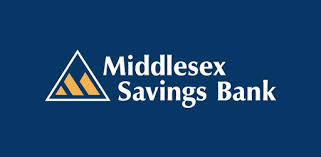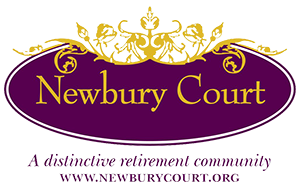Search
Friday, March 9, 2018, First Parish in Wayland
Saturday, March 10, 2018, Old South Church, Boston
Chaconne from Dardanus Jean-Phillippe Rameau (1683-1764)
Passacaille in C Major for harpsichord Louis Couperin (1626-1661)
An Evening Hymn on a Ground Henry Purcell (1659-1695)
Paris Quartet no. 6 in E Minor for traverso, violin, cello, and continuo Georg Philipp Telemann (1681-1767)
Prèlude (A discretion–très vite) • Gay • Vite
Gracieusement •Distrait • Moderé
Intermission
Ciaccona for two violins and continuo Tarquinio Merula (1595-1665)
Mio ben te col il tormento più Luigi Rossi (c. 1597-1653)
La Françoise (from Les Nations) François Couperin (1668-1733)
[Sonade]
Allemande • Première Courante •Seconde Courante
Sarabande • Gigue •Chaconne ou Passacaille
Gavotte • Menuet
Air and Chaconne from Les Fontaines de Versailles Michel-Richard de Lalande (1657-1726)
Suzanne Stumpf and Rachel Carpentier, traversi
Sarah Darling and Jesse Irons, violins
Daniel Ryan, basse de violon and cello; Michael Bahmann, harpsichord
Program Notes
This program explores Baroque works that are founded upon or make use of ground basses and their accompanying harmonies. The practice of using a repeating chord progression as a framework for musical improvisation and composition originated during the Renaissance. By the late 16th and early 17th centuries, two harmonic progressions and their bass lines emerged as important instrumental forms: the chaconne and the passacaglia. Both of these forms consist of a series of variations on specific chord progressions and are usually in triple meter. Although the distinction between the two was more pronounced at their beginnings in the early 17th century, by the 18th century these distinctions became more blurred with the terms often used interchangeably.
The chaconne has origins in Spanish popular culture. It started as a lively, seductive dance-song, accompanied by guitars, tambourines, and castanets. The first notated chaconnes were Italian, and a fine example of one of these is the Ciaccona by the Cremonese composer Tarquinio Merula. Written in the most up-to-date style of the early trio sonata, this piece features lively, conversational banter of the thematic material among the instruments.
The passacaglia’s origin appears to be that of a musical interlude improvised by Spanish guitarists
between strophes of an aria. One theory about the term is that it comes from the words pasar (to walk) and calle (street). The passacaglia’s chord progression was a simpler one than the chaconne’s. From its function as a musical interlude, it evolved into the series of variations on a bass line of four descending notes and tended to be in the minor mode. French composers took a particular shine to the passacaglia and made much more use of it than their Italian and Spanish counterparts from the late 17th to the early 18th century.
An early French composer to use this form was Louis Couperin, the short-lived keyboard composer, harpsichordist, organist, and viol player who was employed at the royal court as ordinaire de la musique de la chambre. His deeply expressive style is captured in his grand Passacaille for solo harpsichord, composed in rondo form.
The chaconne and passacaglia procedure also formed the basis of many vocal compositions. In these works, composers occasionally diverged from strict repetition of the form’s basic harmonic sequences and introduced modulations into different keys for variety and expressive purposes. The arias by Italian composer Luigi Rossi and English composer Henry Purcell are prime examples of this technique. The aria Mio ben te col il tormento più is from Rossi’s opera Orfeo, a work that was premiered in Paris and was highly influential to Rossi’s French colleagues there, including Lully. Purcell’s affecting Evening Hymn is a devotional song in which the extended passacaglia bass line is harmonized in a myriad of poignant ways.
Examples of later French chaconnes include the final movement of the opera Daradanus by the influential theorist and composer Jean-Philipp Rameau. This wide-ranging chaconne incorporates Rameau’s imaginative orchestration featuring musical dialogue between paired flutes and violins along with an obbligato bassoon part. Another late French chaconne is Michel-Richard de Lalande’s Air and Chaconne from his Concert en 5 scènes, Les Fontaines de Versailles. This non-staged work contains a lively chaconne flanked by a short aria, the text of which is an invocation to the winds.
Chaconnes and passacaglias were frequently included in instrumental suites, often as an emotional centerpiece. Francois Couperin’s 1726 collection of four suites contains a chaconne or passacaglia in three of the works. Published under the title of Les Nations, these suites were the culmination of his experiments in combining the French and Italian styles. Each suite begins with an Italian-style sonata, followed by a loosely arranged series of dance movements. The Chaconne ou passacaille from the first suite, La Françoise, combines tendencies of the two forms: the minor mode of the passacaglia and the liveliness of the chaconne.
Georg Philipp Telemann traveled to Paris in 1737 at the invitation of virtuosi who had admired some of his published works. During his stay, several of his pieces were performed at the Concerts Spirituels, and he published the set of Nouveaux quatuors en six suites, commonly known as the Paris Quartets. In Telemann’s own words, the performances of his works that he witnessed “would be worth describing were it possible for words to be found to do them justice.” Telemann’s knowledge of and love for French music is amply evident in this quartet through the elegance of the ornamentation that pervades the work, and the use of the quintessentially French genres of overture (first movement) and chaconne (final movement).
—Daniel Ryan and Suzanne Stumpf











Daniel Ryan and Suzanne Stumpf, Artistic Directors
349 Boston Post Road, Weston, MA 02493
tel. (781) 466-6694
All content © Musicians of the Old Post Road
Privacy Policy
Terms & Conditions
